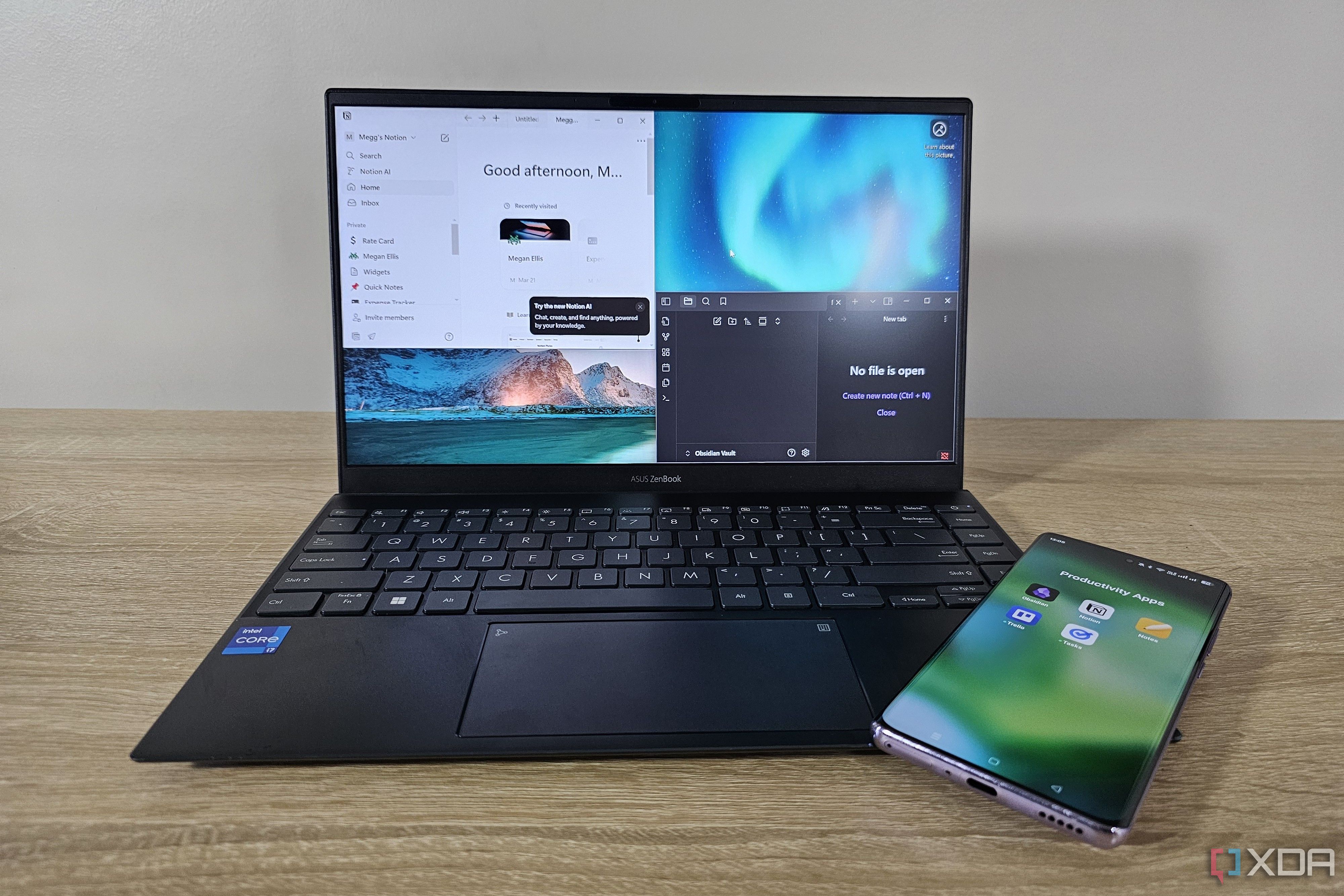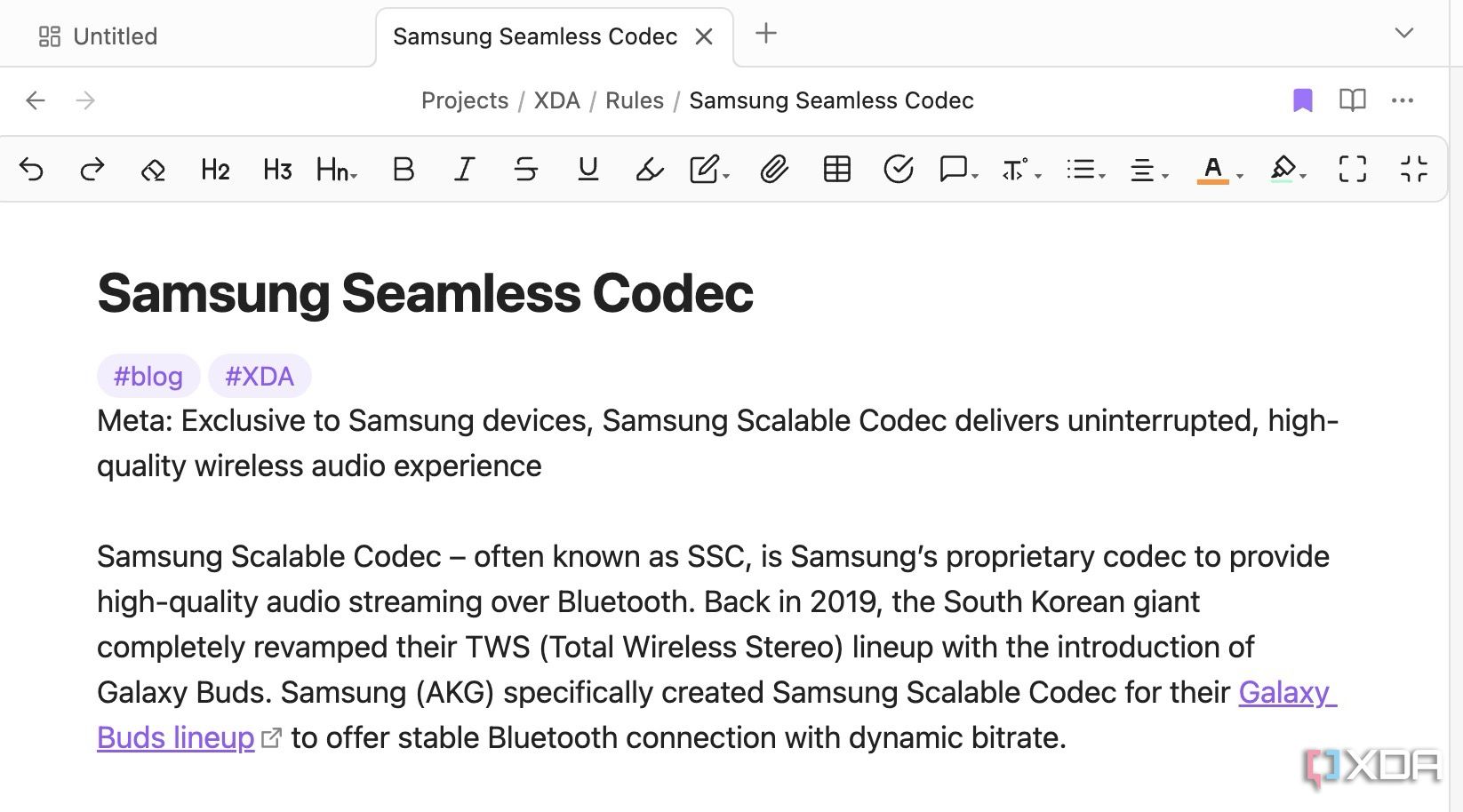I will come clean — I used to rely on Notion for everything. It was my go-to space for tracking campaigns, jotting down notes, planning with calendars, and organizing my entire workflow. It felt like the perfect second brain. But over time, something shifted. The focus moved away from individual users and the simplicity that made it so powerful in the first place. That shift led me to explore other tools. I tried Obsidian, Capacities, and even lesser-known options like TheBrain. To my surprise, they didn’t just replace Notion. They worked better for how I think and work on my own.

Related
5 reasons Outline is better than Notion for most people
5
Notion is more corporate-focused
Some features feel like clutter
Notion shines for teams. Its real-time collaboration, shared workspaces, and integrations with tools like Slack make it a powerhouse for group projects. But as a solo user, I don’t need half of that. I’m not sharing campaign trackers with a team or co-editing meeting notes. I want a space that’s mine — a true second brain tailored to how I process information. Notion’s collaborative bells and whistles started feeling like clutter, with features pushing me toward aesthetics (hello, emoji covers) over substance.
Obsidian is the opposite. It’s unapologetically individual and built for deep thinking. The graph view lets me see how a campaign idea connects to a past project or a stray thought from months ago, sparking insights I’d never get from Notion’s linear databases. It’s like a mind map that grows organically without forcing me to fit my thoughts into predefined boxes.
4
It’s not offline-first
A second brain needs to be reliable and offline
A second brain needs to be reliable, whether I’m on a flight, in a rural café, or simply facing spotty Wi-Fi. Notion’s dependence on the cloud became a glaring weakness. Even with its offline mode (a recent addition), syncing delays and loading lags disrupted my flow. There’s nothing worse than needing a critical note during a meeting, only to watch a spinning wheel of doom.
Obsidian and The Brain solved this by storing data locally. Obsidian’s files live on my device, accessible instantly without the internet. The Brain’s “neurograms” (dynamic links between ideas) work seamlessly offline, mirroring the way my mind connects concepts.
3
Notion tries to be everything
Versatility is its biggest drawback.
Notion is often praised as a versatile, all-in-one workspace, and it certainly lives up to that reputation. But that versatility is also its biggest drawback.
Notion feels like that one friend from school who dabbled in everything but never quite mastered anything. It tries to be a note-taking app, a task manager, a database, a wiki, and more. As a result, it risks becoming a generalist platform that struggles to excel in any one area.
This becomes more apparent as the tool grows more complex. As Notion continues to expand its features in an attempt to cater to broader use cases, it also becomes more expensive, particularly for users who only need it for simple use cases like a personal knowledge base.
2
There’s no data storage flexibility
All your content is stored on Notion’s servers
Notion doesn’t offer much flexibility when it comes to data storage. All your content is stored on Notion’s servers, and you don’t have any control over where or how it’s kept. While that might be convenient, it also means giving up control over your own data, and that can be a problem if privacy or long-term access matters to you.
With tools like Obsidian, you get complete control. Your notes are stored locally on your device, and you can choose how to sync them. Whether that’s through Google Drive, OneDrive, Dropbox, iCloud, or open-source options like Nextcloud, the choice is yours.
If you want even more privacy, Obsidian offers a Sync add-on (paid) that enables end-to-end encryption, so your data stays secure across devices. The best part is that if you’re already using a service like Google One, Microsoft 365, or iCloud+, you can sync your vaults for free.
1
Lack of canvas and graph views
Notion only lets you interlink relevant notes
Notion lets you interlink relevant notes, which can be helpful for building a connected knowledge base. However, tools like Obsidian, Capacities, and The Brain take this a step further, offering more powerful ways to brainstorm, organize, and visualize your thoughts.
Obsidian, for example, includes features like Canvas and Graph View that can completely change how you approach note-taking. The Graph View gives you a visual map of your entire vault, showing how your notes connect to each other. This makes it easier to spot patterns or relationships you might have missed in a linear setup.
Canvas, on the other hand, works like a digital whiteboard. You can lay out ideas using cards, arrows, shapes, and other visual elements. Whether you’re planning a project, building a workflow, or mixing different types of media, Canvas gives you the flexibility to organize everything in a way that makes sense to you.
Choose the right tool for your second brain
Notion isn’t inherently bad. It just might not be the best fit anymore for solo thinkers who prioritize speed, simplicity, and control over their data. As tools like Obsidian and Capacities gain popularity, it’s clear that knowledge management isn’t a one-size-fits-all space.
If you’re unsure which tool fits your workflow best, take a look at our favorite Personal Knowledge Management tools focused on privacy and flexibility. And if you’re exploring options beyond the usual names, don’t miss this open-source alternative that blends the best of both worlds.

Related
3 reasons I’m finally uninstalling Obsidian – and what I’m replacing it with
I’m admitting defeat and uninstalling Obsidian












